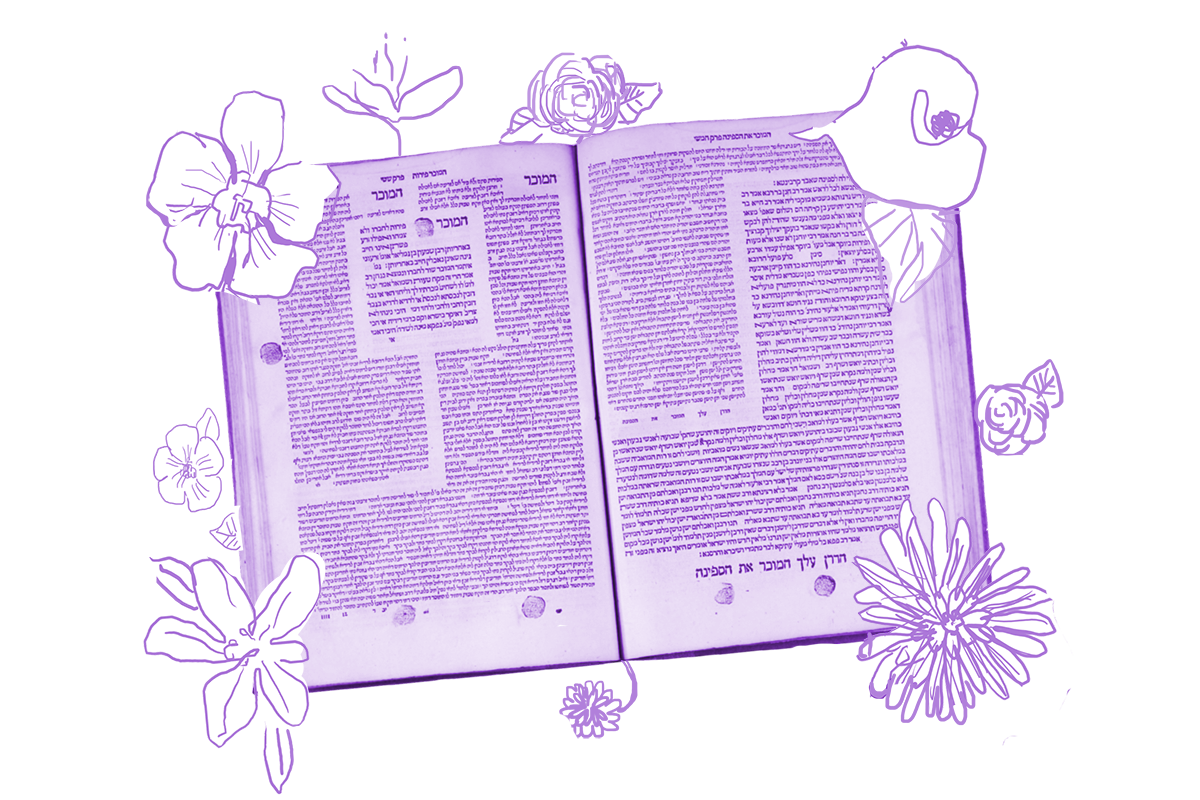Starting at the bottom of the first side of our daf, and continuing on the second, we are given the following conclusion to a sugya:
The halakhah goes according to Nahman. The halakhah goes according to Nahman. The halakhah goes according to Nahmani.
Each of these short sentences refers to a dispute previously explored. The first two debates are decided according to Rav Nahman, a third-generation Babylonian amora. Nahmani, who decided the third debate, is better known in the Talmud as Abaye, the well-known fourth-generation Babylonian amora. Several commentators ask why he is here called Nahmani, rather than Abaye (a phenomenon which happens in a few other places throughout the Talmud). Nineteenth-century Russian talmudist Rabbi Samuel Strashun argues it’s an aesthetic choice, creating a poetic triplicate to close out the sugya.
And why does this famous sage have two names? Rashi says that Abaye was given the nickname Nahmani by his uncle, Rabbah bar Nahmani, who took him in after he was orphaned and taught him Torah. But Rabbi Natan bar Yechiel, author of the eleventh-century talmudic dictionary the Aruch, wrote that Abaye was actually his nickname, and Nahmani his given name. He explains that Rabbah bar Nahmani didn’t want to use his own father’s name for his nephew and so, out of respect, instead called him Abaye meaning “little father.” This nickname was accepted among the rabbis, as Abaye was “from the fathers and the greats” amongst them.
With your help, My Jewish Learning can provide endless opportunities for learning, connection and discovery.
Incongruously, Rashi cites another explanation for the name on Horayot 14a: He argues that Nahmani is a derogatory nickname, implying that he is merely a student of Rav Nahman, not a sage with a name in his own right. But others note that this doesn’t make sense, not only because of the explanations we have learned elsewhere, but because it is not an insult to call someone a student of Rav Nahman.
We may never know the true origins of Abaye’s two names, but before leaving this page, let’s turn to the mishnah that opens the next sugya:
Originally, they would change his name and her name (i.e. use the names by which they were known in the place the bill of divorce was written, even if they were known by other names elsewhere) and write the name of his city and the name of her city.
Rabban Gamliel the Elder instituted that one should write So-and-So and any name by which he is known, So-and-So and any name by which she is known, for the betterment of the world (tikkun olam).
This mishnah raises a problem: If a person was known in one place by one name and another place by another name, and only one of those names was used on the bill of divorce, people may be confused as to whether this person is actually divorced. Therefore, Rabban Gamliel declared that a get should contain all names by which both parties are known.
Although there is no explicit connection between the story of Abaye’s two names and this mishnah, perhaps the editors of the Gemara used the name Nahmani just above this mishnah not only for its poetic force, but to underscore the challenge addressed by the mishnah: Having more than one name can breed confusion! Maybe on the first read, you didn’t realize that Abaye gave us the final ruling in the previous sugya. If so, that is a strong demonstration of exactly why a divorce document should be as clear as possible about the parties to the divorce, by listing all their names.
Read all of Gittin 34 on Sefaria.
This piece originally appeared in a My Jewish Learning Daf Yomi email newsletter sent on June 19th, 2023. If you are interested in receiving the newsletter, sign up here.



